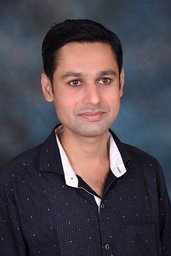Bengaluru doctors conduct surgery to remove parasitic twin from a baby
07:40PM Thu 9 Feb, 2017

BENGALURU: An undeveloped parasitic twin was separated from a baby in a surgery lasting a little over three hours at the Narayana Health hospital here on January 24.
When 23-year-old Lalithamma from Puladinni village in Raichur district conceived for the second time, little did she know that her second son will have a parasitic twin.
Had the benefits of Janani Suraksha Yojane reached her, she would have got a pre-natal ultrasound, which would have revealed the fetal abnormality.
But her family was poor. Her husband, Chennabasava (26), worked in a farm in his village, 60 km from Raichur.
The only silver lining was an institutional delivery at a primary health centre in Raichur on January 21. Her son weighed three kgs at birth because of a parasitic twin, weighing more than a kilo, being attached to him at the abdomen and groin. The baby—now 20 days old— had four legs and two genitals.
The baby was referred to Jindal Sanjeevani Hospital managed by Narayana Hrudayalaya in Sandur taluk, Ballari. From then on things started looking up for Lalithamma and her newborn.
“Dr Vijay Kumar Shetty at the Jindal Hospital saw pictures of my son on WhatsApp. He said my son can be operated upon. I told him I have no money for surgery. We cursed our fate when we found our son had four legs,” said Chennabasava.
Reports were relayed through telemedicine from Ballari to the hospital. The baby was admitted on January 24 after having travelled 300 kilometres.
Thorough investigations followed. An ultrasound revealed his kidneys were in a good condition. X-rays of the spine and lungs were conducted. An ECG and ECHO revealed the baby had a minor heart problem.
“The heart and lungs were in use to sustain functions of two children. This is a huge strain for a heart that small,” said Dr Sanjay Rao, senior consultant paediatric surgeon, Narayana Health— one of the 25-member team that performed the surgery.
“We found that the intestine was shared. Some muscles and tissue near the hip were also shared. A contrast CT angiogram was performed where a dye was injected into the baby’s veins to identify where the parasitic twin was getting blood supply from. We had to make sure the urinary passage was only one. The parasitic twin was also a male,” said Dr Rao.
What caused this?
The doctors pitched two theories on why this was caused. “In a case of conjoined twins, the embryo splits into two but is not separated. Here the embryo did not split and the twinning process went wrong. The second theory is the formation of specific types of tumours. The tumour itself matured to such an extent that it starts to form body parts such as the spine, bones, and other organs. It is more likely a faulty twinning process,” said Dr Rao.
The mother is able to feed the baby now who is likely be discharged soon. “The baby will require follow-ups till he is two years old. That can be done through telemedicine in Ballari,” said Dr Ashley D’Cruz, Director and senior consultant Paediatrician, Narayana Health.











